
Had Alan Moore just stopped writing comics after the 1980s — during which readers were introduced to

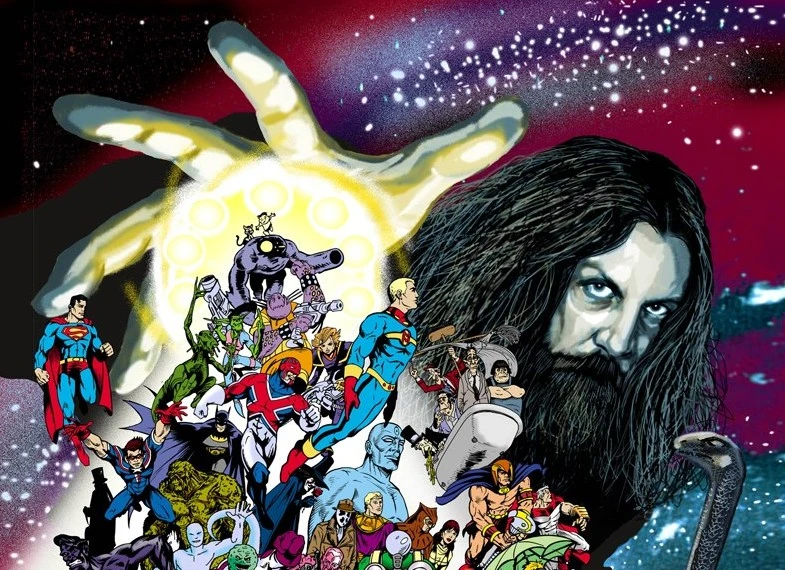


For all things Alan Moore.
Why The League of Extraordinary Gentlemen is Alan Moore's magnum opus

Had Alan Moore just stopped writing comics after the 1980s — during which readers were introduced to

Over the course of a single decade, Moore not only established himself as one of the most brilliant storytellers of the last hundred years, but he also helped reinvent an entire medium, turning the humble comic book into a profoundly respected art-form capable of marrying story, character, and illustrated visuals in radically new ways. "I was always trying to find what the medium was capable of and to push it as far as possible," Moore told The Guardian in 2011.
Thankfully, he did not retire and continued to gift the world with the succulent fruits plucked straight off the vine of his fertile mind. While fans differ on the matter of favorite books, we'd like to argue that Moore's magnum opus — a veritable playground of the imagination, if you will — is The League of Extraordinary Gentlemen, particularly its first two volumes, which served as the basis for the loose film adaptation of the same name released in 2003 (stream it on Peacock right here).
Created in tandem with the l
"For the first time in my career, I’m genuinely excited": Watchmen author Alan Moore’s fantasy novel getting TV adaptation
“I think at last I’m ready for my closeup.”
Deadline confirms that The Great When, a new fantasy novel by Moore, is getting a TV adaptation. The production company Playground landed the rights to The Great When, a fantasy graphic novel that was published by Bloomsbury on October 1. It's the first in Moore’s planned five-volume Long London series of epic fantasy novels, which Playground plans to adapt into a series that spans several seasons. Moore reacted to the news in the statement below:
For the first time in my career, I’m genuinely excited and enthusiastic about a work of mine…one that I own, and believe could work marvelously in a different medium…being adapted for the screen.
In Playground, I feel that I’ve connected with people who respect both me and the narrative and are receptive to such input as I can offer. And, given Playground’s track record, I have little doubt that this will be anything short of spectacular. It’s taken me some time, but I think at last I’m ready for my closeup.
...
Alan Moore d
Happy seventy-first birthday, Alan Moore

Alan Moore is seventy-one years old. We wish the Great Wizard of Northampton a very happy birthday, as the answer to The Great When is... today!

Strong Men Also Cry: The Tom Strong Compendium
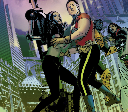
Revisiting one of the millennial artifacts of writer Alan Moore's final foray into the superhero mainstream: Tom Strong, now reprinted as a single large softcover.

Tom Strong, collected again in DC’s new "Compendium" format, is a clever thing. The 36-issue tome is more proof of the conceptual brilliance of Alan Moore, as if we needed it. Also: the artistic merits of penciler Chris Sprouse, as if we needed more. From the first issue to the last—by which I mean issues #1-22, and then issue #36, ignoring a stretch of fill-ins that are mostly treading water, which I’ll address separately—the whole thing is a marvel of carefully-considered structure. From the fictional setting to the timeline of events to how various elements reoccur, you can see thing whole thing has been thoroughly planned.
Launched in 1999 as part of Moore’s ABC (America’s Best Comics) line, Tom Strong appears, at first glance, to be the most traditional book on the slate. Top Ten gleefully blended superheroes with police procedural; Promethea quickly chased large metaphysical ideas into the heavens; and The League of Extraordinary Gentlemen showed us how big Alan Moore’s libra

Enthusiasm can be a productive force for good, but our culture has rapidly become a fan-based landscape that the rest of us are merely living in

About a decade ago, I ventured my opinion that the adult multitudes queueing for superhero movies were potentially an indicator of emotional arrest, which could have worrying political and social implications. Since at that time Brexit, Donald Trump and fascist populism hadn’t happened yet, my evidently crazy diatribe was largely met with outrage from the fan community, some of whom angrily demanded I be extradited to the US and made to stand trial for my crimes against superhumanity – which I felt didn’t necessarily disprove my allegations.
...
Ten years on, let me make my position clear: I believe that fandom is a wonderful and vital organ of contemporary culture, without which that culture ultimately stagnates, atrophies and dies. At the same time, I’m sure that fandom is sometimes a grotesque blight that poisons the society surrounding it with its mean-spirited obsessions and ridiculous, unearned sense of entitlement.
...
Unnervingly rapidly, our culture has becom
Alan Moore's 1963 - Internet Archive

All six issues of 1963 by Alan Moore. An independent Marvel Parody
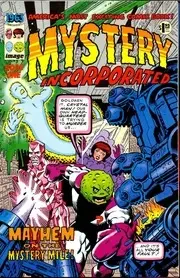
The story behind 1963, Alan Moore's tribute/commentary on Silver Age Marvel is a messy one. Back in 2010 Steve Bissette revealed that attempts to properly complete the series (with an annual to be drawn by Jim Lee) and/or collect what was published had failed:
He also stated that attempts to reprint and conclude the 1963 series have repeatedly failed over the last ten years, the most recent at Dynamite seemed almost to come to fruition, but did not, Alan Moore removing his blessing.
An Alex Ross illustration (now removed) would have formed the basis for the cover to the Dynamite hardcover.
As a result, it's been decided that a reprint will never happen. And copyright in the 1963 characters has been divided – Bissette's share forming the basis of his Tales Of The Uncanny project, now being published by About Comics, he's pulled copies of
The best indie comics written by Alan Moore

From character studies like Miracleman to gritty tales like From Hell, Alan Moore's greatest indie comics have captivated readers for decades.
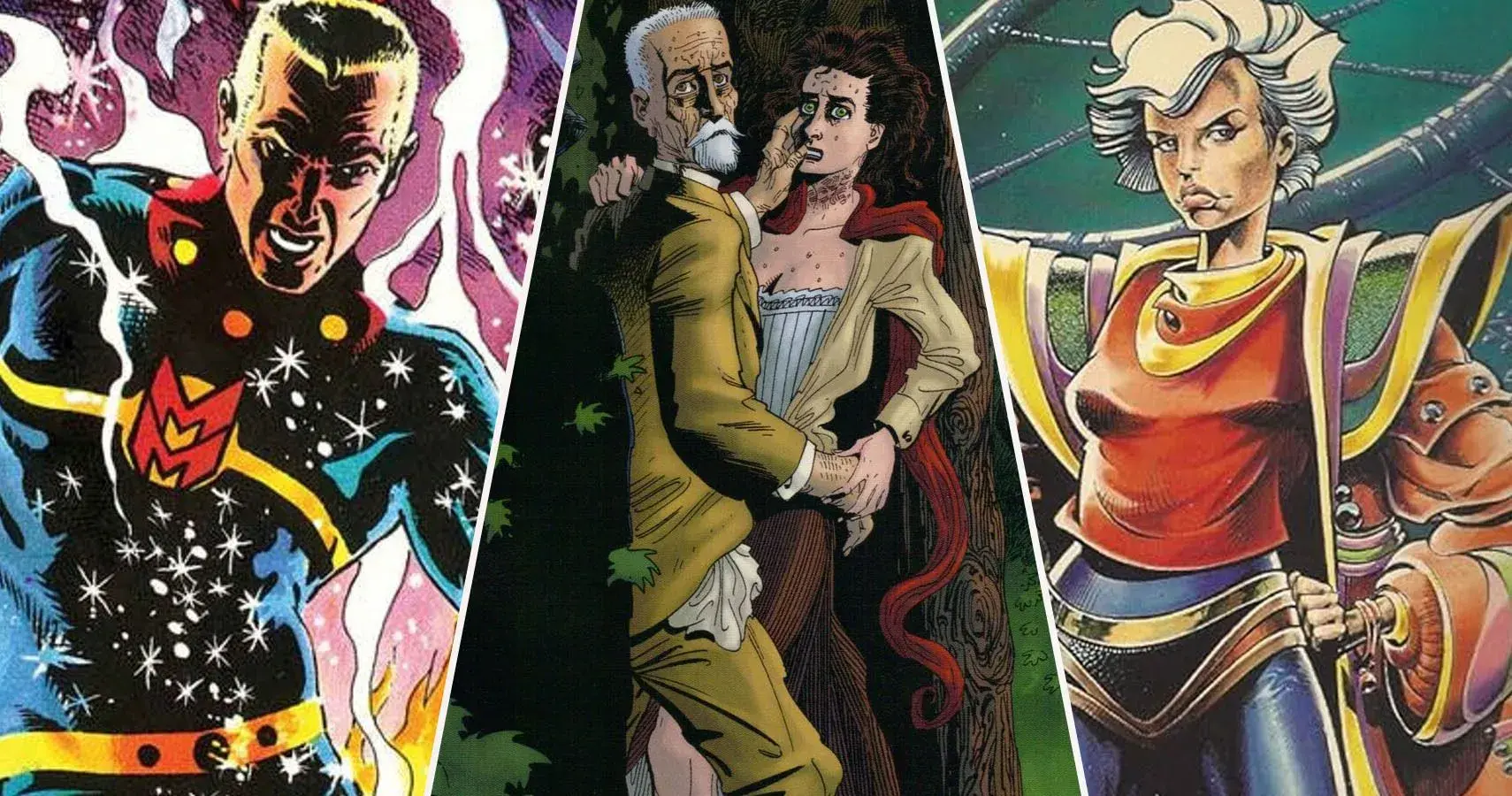
cross-posted from: https://feddit.uk/post/8838989
Alan Moore is generally considered the greatest writer in the comic medium. This year, Moore releases one last comic — The Moon And Serpent Bumper Book — a mixture of prose and traditional comic format from indie publishers Top Shelf Productions and Knockabout Limited. Moore has crafted indie comics since the '90s, after his split from DC Comics...
Alan Moore also wrote some brilliant stories in the indie comic genre (some of which, the Big Two published at a later date). Writing indie comics, Moore had the freedom to take his projects in any direction he wanted, resulting in masterpieces that readers could hardly put down. Alan Moore is a legend, and his indie work often surpasses the Big Two comics that he's known for.
The list is:
- From Hell
- The League of Extraordinary Gentlemen Volume Two
- Providence
- Marvelman/Miracleman
- The League of Extraordinary Gentlemen: The Black Dossier
- Prometh
39 years ago, “[For] The Man Who Has Everything” changed superheroes forever

One year before 'Watchmen,' Alan Moore and Dave Gibbons took on the most iconic superhero of them all.
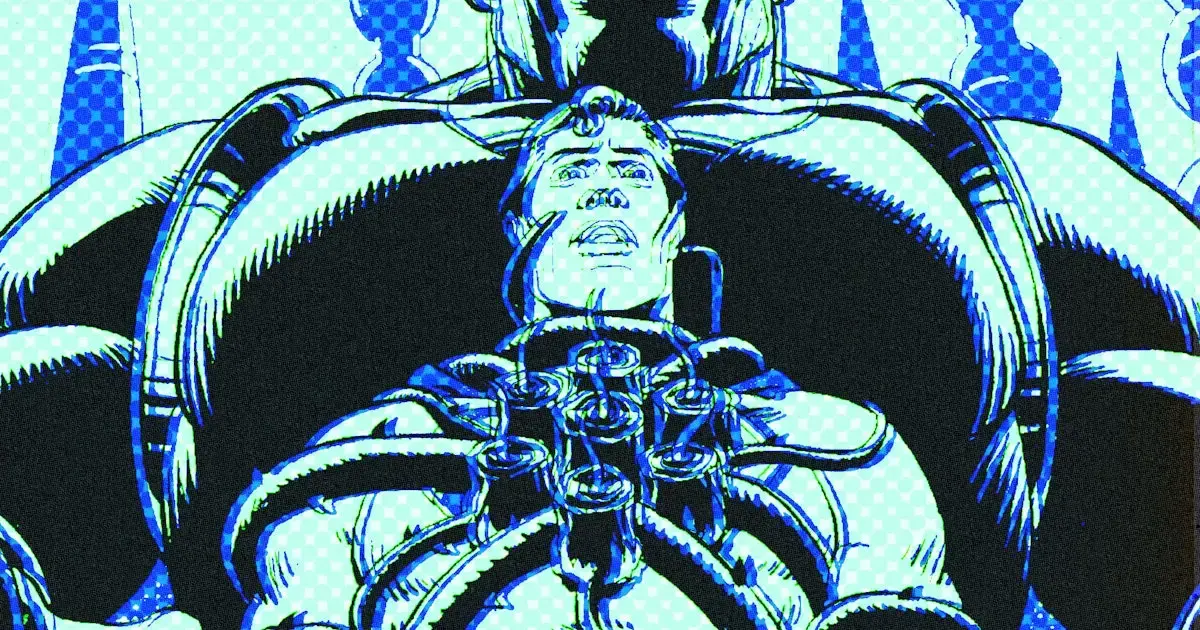
Some debates among superhero fans will never be resolved. Superman vs. Batman. Iron Man vs. Captain America. DC vs. Marvel. But if there’s one thing everyone seems to agree on, it’s that 1986 is the most important year in comic book history. The argument why is simple — that one year saw the release of several groundbreaking comics:
- Frank Miller’s The Dark Knight Returns, an epic story about an elderly Batman who comes out of retirement to save Gotham City in the face of American decline.
- Alan Moore and Dave Gibbon’s Watchmen, a meticulous deconstruction of the entire superhero genre that’s also just a damn-good comic.
- Art Spiegelman’s Maus, which retold the story of the Holocaust to terrific effect in comic book form.
...
But before Gibbons and Moore could deconstruct the entire superhero genre with Watchmen and change comics forever, they had to take on the most iconic superhero of them all.
Released in 1985, “For the Man Who Has Everything,” is a Super
Alan Moore on magic, storytelling, fascism, and his new not-quite-a-comic

Don’t call it his farewell to comics! The prolific and influential author of 'Watchmen,' 'V for Vendetta,' 'Jerusalem,' 'The Great When,' and many more discusses fascism, superheroes, and 'The Moon and Serpent Bumper Book of Magic.'

Many readers of Alan Moore—the prolific and influential author of Watchmen, V for Vendetta, Jerusalem, and, most recently, The Great When—are enchanted by the magic of his creative vision. For his next trick, The Moon and Serpent Bumper Book of Magic, Moore would like you to come away with a respect for, and perhaps even a belief in, magic itself.
The 400+ page grimoire, coauthored with the late Steve Moore (no relation) and published by IDW’s Top Shelf Productions imprint, combines a lively and accessible history of ritual magic, practical guidance on how and why to use such techniques as tantra and Tarot, and amusing summaries of the lives of magical practitioners through the years—from Hermes Trismegistus to Alistair Crowley—done as single-page comics. Moore spoke with PW via email about the Bumper Book, magic, superheroes, and more.
...
On the matter of the comic strip medium and its possible links to occult consciousness, however, I think there’s a much stronger case
Fossil Angels
Fossil Angels was written by Alan Moore in December 2002, and was to appear in KAOS #15. KAOS #15 never actually appeared, and the piece has been without a home since then. (More information about KAOS and why this wasn't published there in this article on Bleeding Cool.) I was lucky enough to be given a number of Alan Moore’s scripts by Alan himself a few years ago, and this was amongst them. I asked if I could publish it and, when another publication which it was slated to appear in folded, Alan told me I was free to go ahead. So, I am very proud to be allowed to present this piece here on Glycon for its first publication anywhere. It is in two parts, with a link to the second part at the end of this page. This is, and remains, the sole property and copyright of its creator, Alan Moore.
FOSSIL ANGELS
Regard the world of magic. A scattering of occult orders which, when not attempting to disprove
Alan Moore and Jacen Burrows H.P. Lovecraft comics

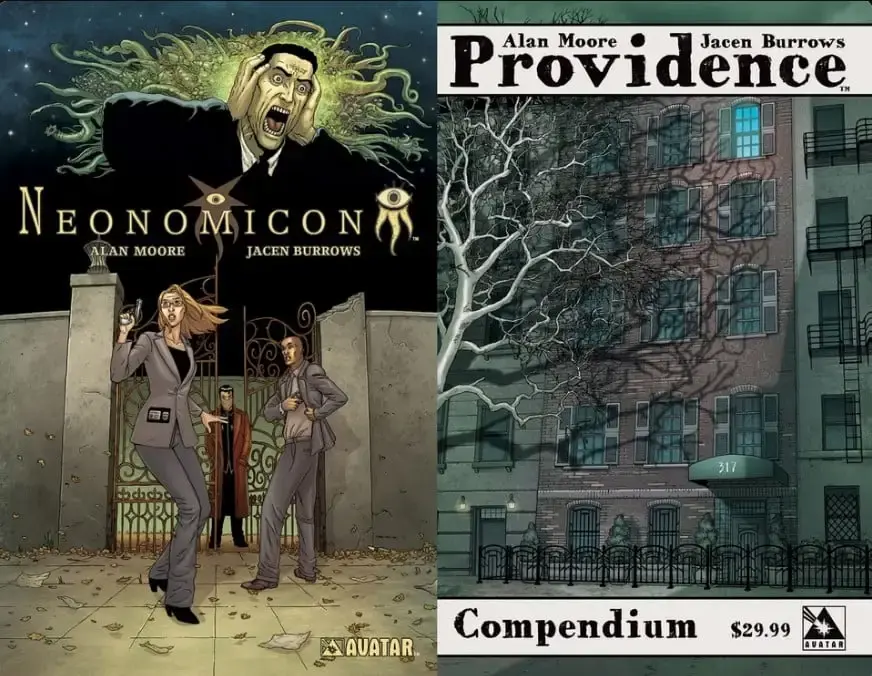
cross-posted from: https://lemmy.world/post/20662627
Alan Moore and Jacen Burrows have collaborated on notable comic series that delve into the works of H.P. Lovecraft, particularly through Neonomicon and Providence.
Neonomicon is a four-issue comic series published from 2010 to 2011, which serves as a sequel to Moore's earlier work, The Courtyard. The story follows FBI agents who uncover a cult linked to Lovecraft's writings.
Providence Following Neonomicon, Providence was published between 2015 and 2017. This twelve-issue series acts as both a prequel and sequel to Moore's previous works. Critics have described Providence as "the Watchmen of horror," highlighting its depth and complexity
https://factsprovidence.wordpress.com/moore-lovecraft-comics-annotation-index/ : A list of all the of Alan Moore and Jacen Burrows H.P. Lovecraft comics issue by issue, including covers – as well other Moore/Lovecraftian works in collaboration with other artists, and r
Alan Moore's second Long London novel is"I Hear A New World"

Alan Moore's first Long London novel, The Great When is published today. And we have learned the name of the second, I Hear A New World.
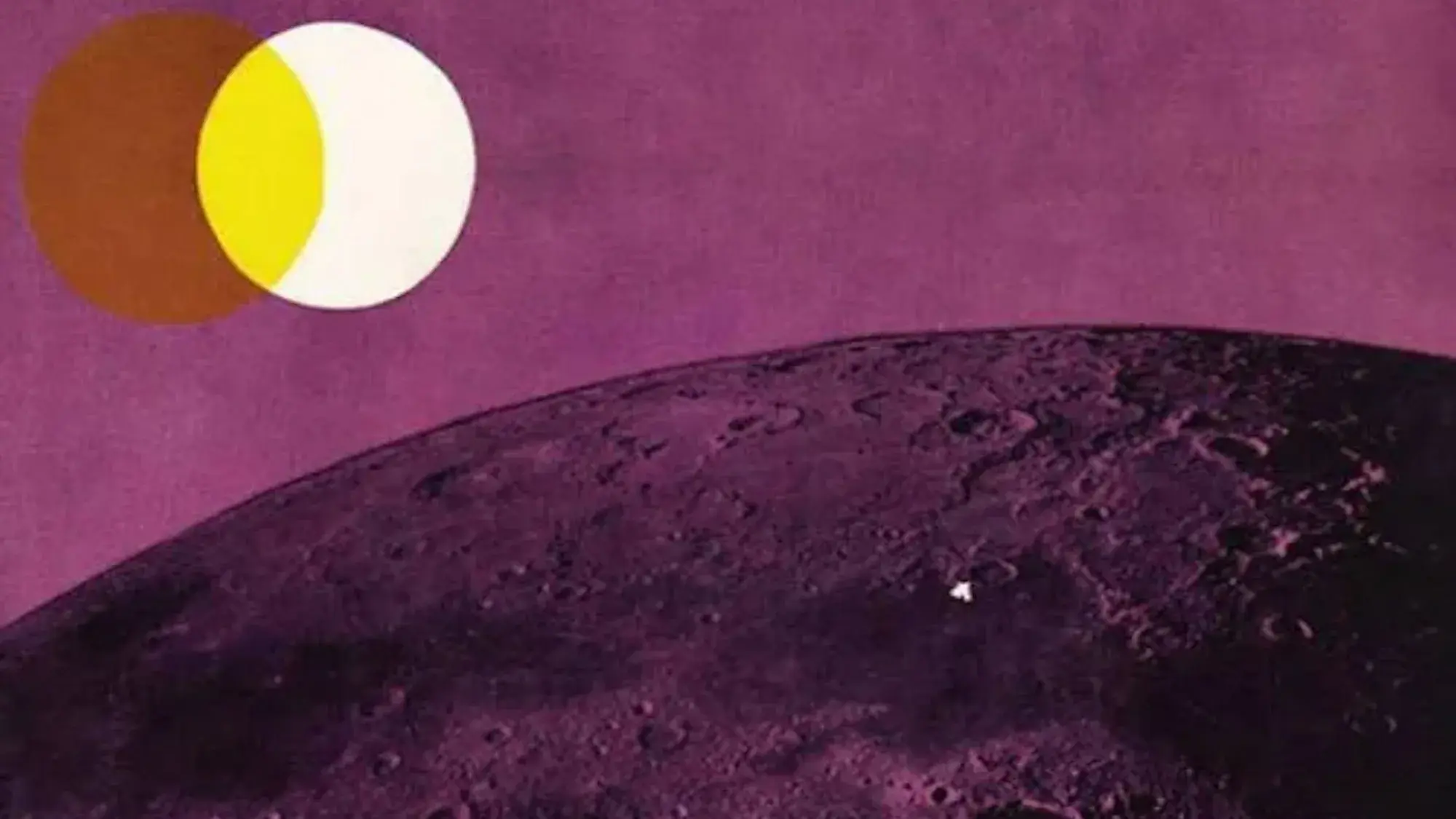
We are going to see a lot of Alan Moore this month, with the release of two books: his final graphic novel, The Moon And Serpent Bumper Book Of Magic in two weeks and today sees the release of the first of his five Long London novels, The Great When set in 1949 in an alternative London. The subsequent books will be set in 1959, 1969, 1979, and then jumping to 1999. And now, we have learned the name of the second of that novel, I Hear A New World.
The second book is titled after the album by Joe Meek, I Hear A New World, recorded in 1959 but released in 1960, subtitled "an outer space music fantasy". ... But he is also famed for taking a shotgun owned by musician Heinz Burt, killing his landlady, Violet Shenton, and then shooting himself in 1967. Those last moments of Joe Meek's life also featured in Alan Moore's spoken word performance art piece The Highbury Working, A Beat Séance, created by The Moon and Serpent Grand Egyptian Theatre of Marvels collaborative team of Moore, Davi

The Watchmen writer loses the speech bubbles in his gothic vision of postwar London

A well-known comics writer once told me that the mistake almost every conventional novelist who takes a turn writing comics initially makes is trying to put too many words into a panel. I wonder whether the opposite applies to writers who hop art forms in the other direction: freed at last from the rigid discipline of the speech bubble, they go bananas.
When Alan Moore, the graphic novelist best known for Watchmen, wrote his 2016 novel Jerusalem it was 1,200 pages long. Although his latest book, The Great When — the first in a projected series of “Long London” novels — is a manageable 300-odd pages, the style has something about it of a man who has spent a career writing in a medium where you don’t get to use similes or adjectives much and is now making up for lost time.
So, when a character smiles, we discover that “her smile was sunrise on a renderer’s yard, its dire light creeping into every crevice and uncovering each gruesome spectacle. The corners of her mouth crawled bac